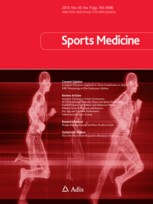Background: Sport-related concussions are a subset of mild traumatic brain injuries and are a concern for many sporting activities worldwide.
Objective: To review and update the literature in regard to the history, pathophysiology, recognition, assessment, management and knowledge of concussion.
Methods: Searches of electronic literature databases were performed to identify studies published up until April 2013.
Results: 292 publications focusing on concussion met the inclusion criteria, and so they were quality rated and reviewed.
Conclusion: Concussion is hard to recognize and diagnose. Initial sideline assessment via the Sports Concussion Assessment Tool 3 (SCAT3), Child-SCAT3 or King-Devick Test should be undertaken to identify athletes with concussion as part of a continuum of assessment modalities and athlete management. Sports medicine practitioners should be cognizant of the definition, extent and nature of concussion, and should work with coaches, athletes and trainers to identify and manage concussions. The most common reason for variations in management of concussion is lack of awareness of—and confusion about—the many available published guidelines for concussion. Future research should focus on better systems and tools for recognition, assessment and management of concussion. Sport participants’ knowledge of concussion should be evaluated more rigorously, with interventions for sports where there is little knowledge of recognition, assessment and appropriate management of concussion.
Summary Points:
- Review of literature exploring concussion history, pathophysiology, recognition, assessment, and management.
- Signs of concussion including loss of consciousness, amnesia, focal neurological abnormalities are often not present, which is why sideline tests including the SCAT3 and King-Devick Test should be used to identify athletes with concussion who have less obvious signs and symptoms.
- Oculomotor function incorporates multiple sensory areas and frequently affected in mild concussion cases.
- Multiple individual measures should be used to determine when an athlete may return to play. Symptom assessment, neurocognitive function, and oculomotor testing may be used to monitor recovery and progress.

